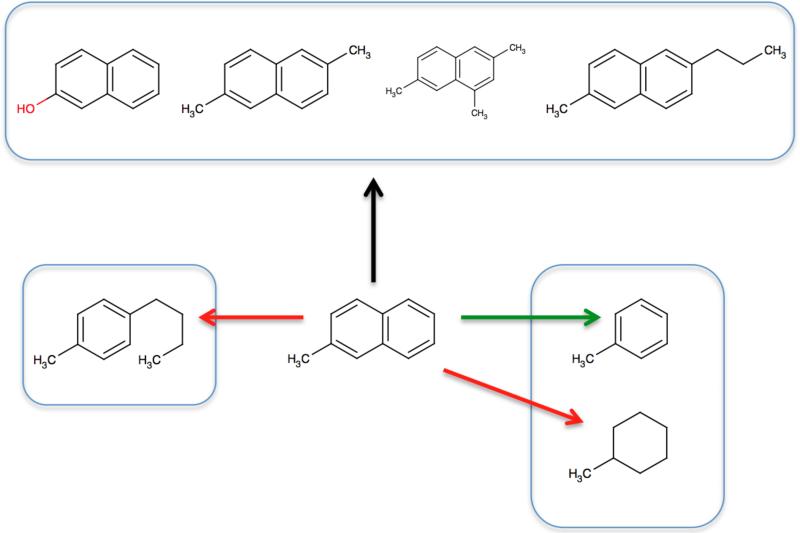Fig. 1.
Favorable mutations of 2-methylnaphthalene, based on our design goals. Black and green arrows show allowed transformations from 2-methylnaphthalene. Red arrows show transformations which are not allowed. Transformations marked by the black arrow are considered the most favorable, and similarity (and hence favorability) decreases from left to right, based on design Goal 1. Mutation from 2-methylnaphthalene to 1-butyl-4-methylbenzene is prohibited (red arrow to left) because it would involve breaking a ring in a bi-cycle (Goal 4). Mutation to toluene (green arrow) is allowed only under the “loose” scoring scheme, and only if necessary to span the set (Section 2.2.4), while mutation to methylcyclohexane is prohibited (red arrow to right) because it involves breaking a ring in a bi-cycle and leaving a flexible ring behind (design Goal 4).

